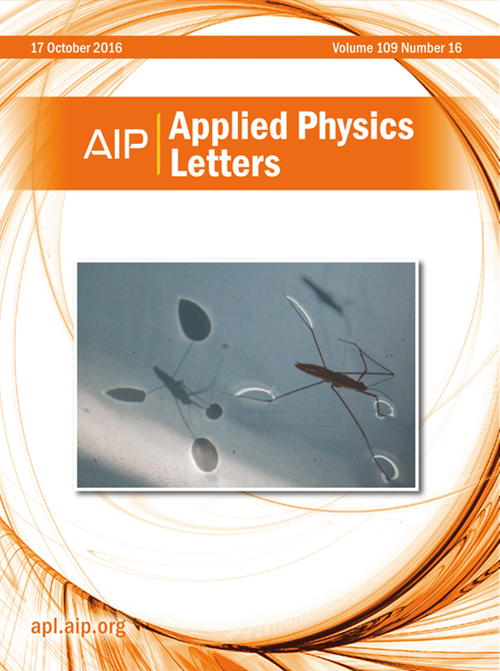Strong elastic coupling: Out-of-plane strain, negative Poisson's ratio, and linear bandgap tunability
IF 3.5
2区 物理与天体物理
Q2 PHYSICS, APPLIED
引用次数: 0
Abstract
Strain engineering is a promising strategy for tailoring the properties of two-dimensional (2D) materials. Despite the challenge of interlayer cleavage due to weak van der Waals interactions, by using in situ transmission electron microscopy, we demonstrate that large uniaxial tensile strain can be applied to black phosphorus (BP) not only along the zigzag (ZZ) and armchair (AC) directions but also in the out-of-plane (OP) direction. Notably, the maximum tensile strain along the OP direction reaches 5.0%, comparable to that along ZZ and AC directions. Moreover, a negative Poisson's ratio is directly observed between OP/AC and AC/OP directions, indicating strong elastic coupling originating from interlayer–intralayer electron redistribution under tensile strain. Interestingly, different from tensile strain along ZZ or AC, the bandgap of BP is linearly tunable under OP tensile strain. This work underscores OP tensile strain offering avenues for tuning electronic, optical, and magnetic properties of 2D materials and potential applications in strain electronics and flexible electronics.强弹性耦合:面外应变、负泊松比和线性带隙可调性
应变工程是一种很有前途的策略来定制二维(2D)材料的特性。尽管由于弱范德华相互作用而导致层间解理的挑战,但通过原位透射电镜,我们证明了大的单轴拉伸应变不仅可以沿之字形(ZZ)和扶手椅(AC)方向施加到黑磷(BP)上,而且可以在面外(OP)方向施加。值得注意的是,OP方向的最大拉伸应变达到5.0%,与ZZ和AC方向相当。此外,OP/AC方向和AC/OP方向的泊松比均为负,表明在拉伸应变作用下,层间和层内电子重分布产生了强的弹性耦合。有趣的是,与沿ZZ或AC的拉伸应变不同,BP的带隙在OP拉伸应变下是线性可调的。这项工作强调了OP拉伸应变,为调整二维材料的电子、光学和磁性提供了途径,并在应变电子和柔性电子中有潜在的应用。
本文章由计算机程序翻译,如有差异,请以英文原文为准。
求助全文
约1分钟内获得全文
求助全文
来源期刊

Applied Physics Letters
物理-物理:应用
CiteScore
6.40
自引率
10.00%
发文量
1821
审稿时长
1.6 months
期刊介绍:
Applied Physics Letters (APL) features concise, up-to-date reports on significant new findings in applied physics. Emphasizing rapid dissemination of key data and new physical insights, APL offers prompt publication of new experimental and theoretical papers reporting applications of physics phenomena to all branches of science, engineering, and modern technology.
In addition to regular articles, the journal also publishes invited Fast Track, Perspectives, and in-depth Editorials which report on cutting-edge areas in applied physics.
APL Perspectives are forward-looking invited letters which highlight recent developments or discoveries. Emphasis is placed on very recent developments, potentially disruptive technologies, open questions and possible solutions. They also include a mini-roadmap detailing where the community should direct efforts in order for the phenomena to be viable for application and the challenges associated with meeting that performance threshold. Perspectives are characterized by personal viewpoints and opinions of recognized experts in the field.
Fast Track articles are invited original research articles that report results that are particularly novel and important or provide a significant advancement in an emerging field. Because of the urgency and scientific importance of the work, the peer review process is accelerated. If, during the review process, it becomes apparent that the paper does not meet the Fast Track criterion, it is returned to a normal track.
 求助内容:
求助内容: 应助结果提醒方式:
应助结果提醒方式:


